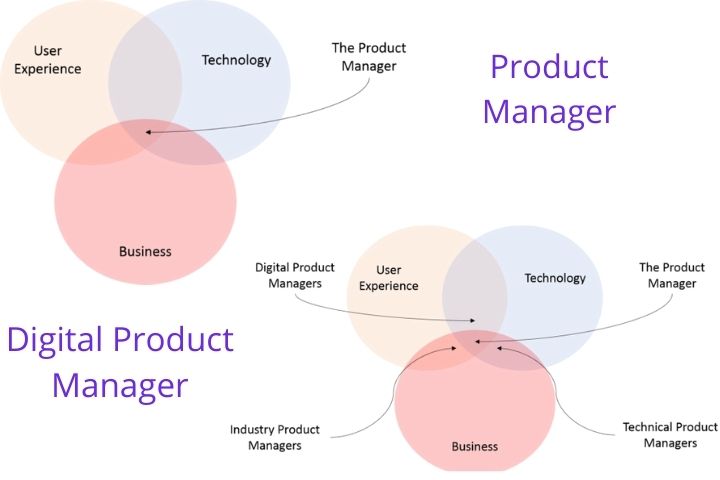Digital Product Management - Overview, Beginners Guide
 Kyrian Chigozie
Kyrian ChigozieTable of contents

One of the highest paying and in-demand skills today is Product management. This role is responsible for driving the development of products to market success.
When this responsibility is required for a digital product such as software tools and Mobile apps, then it is digital product management.
If you are looking to become a digital product manager, you should be concerned with how to create actionable focus to successfully manage products; how to focus your work using modern product management methods; and how to manage and amplify existing products.
All these cannot be honed without understanding the fundamentals of digital product management which this article has been developed to focus on, touching on the prospects, required skills, how to learn, and income potential of digital product management.
Prospects for Digital Product Management (DPM)
Not all businesses are interested in the expertise of managing digital products. As a DPM, you should be able to identify the types of products that are your prospects and influence how quickly value is delivered to users.
People looking to learn Digital product management should be focused on targeting:
Software as a Service (SaaS)
Mobile Applications
Software-augmented hardware solutions
Internal IT solutions
The techniques you will learn as a Digital product manager will be vital in a SaaS scope because customers have high expectations of the delivery of value from the software so rapid changes need to be easily deployed to adjust to the changing intent of users.
Imagine the online product you are currently using stops delivering value, you are likely to discontinue using the product and move elsewhere. So SaaS relies on product management to prevent this.
In a similar vein, mobile apps rely on digital product management to make sure users continue to gain new advantages, functions, or features over time. Numerous apps are updated on a monthly basis, as you can see by looking at the Google Playstore analytics.
Implementing these changes requires information and decision tools that don’t bog the developers down and that are where the role of product management comes in. You will realize that the need for digital product management applies to virtually every environment that adopts a digital product.
As an illustration, we are currently going from project-based to product-based development. As a result, internal IT solutions depend on product management to choose the best course of action by carefully studying the needs of the customer.
Is a digital product manager different from a regular product manager?

The role of product management has long existed before the vacuum of digital product management. However, if you are going to niche down in the skill, you should be able to identify the line between a digital product manager and a regular product manager.
The truth is that digital product managers – of digital products - share the same fundamental role and responsibilities as regular product managers - of traditional products.
Especially on a high level, both digital and traditional product managers are expected to understand customer needs, define the whole product; the product strategy, and the go-to-market strategy, and also gather requirements to guide sales and marketing.
Of course, the two abilities are very different from one another because one is geared toward digital products like software while the other is centered on traditional products. Additionally, digital product managers would have information about customer interactions with the product at their fingertips that traditional product managers might not.
However, both share similar responsibilities such as being the central point of communication for the product and owning the roadmap, and communicating changes.
What's the main responsibility of a digital product manager?
A digital product manager's primary duty is to transform customer interaction data into insights that are targeted toward product enhancements for customers and to take advantage of the following growth opportunities.
Unlike conventional products, digital products could have a rapid change chance so product managers focused on tech-oriented products are always in a learning state for new trends and information.
Services of the Digital product manager include creating and validating product hypothesis, establishing, Product-Market fit, liaising with UX, Engineering, and other cross-functional teams to idealize product, and also ensuring customer acquisition, retention, monetization, and pricing.
Meanwhile, in some digital-oriented firms, their product managers are tasked with setting measurable goals for the business and making data-informed decisions.
Can anyone become a Digital Product manager?
As with many other digital skills, anyone can become a product manager as long as the required training is acquired. However, many companies would be more interested in digital product managers with a wealth of experience in scaling products.
The essentials to be called a product manager, in time past, were the ability to simply assess market data, create requirements, and manage the marketing. However, with the advancement of technology, companies that manage products that way may not remain afloat.
The new game of being a digital product manager is to be conversant with managing massive troves of data available for making decisions. Product managers who know their onions, especially in the area of leveraging deep insights into customer motivation and experience are more relevant and searched for.
If you consider yourself ready to learn the ropes of charting direction and creating a successful working environment for all the actors involved in product success, then you can be a digital product manager.
If you aren’t in the circle of people who are open to learning all the time, then you may not find this skill appealing.
How to get the best course on Digital Product Management
One of the quickest ways to get on track in the career journey of digital product management is to learn a course online that will get you started which should take, at least, three months of study. This age has made it easy that you can self-learn from your home.
However, there are many courses out there under the pretext of offering value. You shouldn't give free courses priority while selecting the best course in digital product management.
A good course that will get you started on your product management journey should teach you how to create the actionable focus to successfully manage products, how to focus your work using modern product management tools and methods, how to manage new products and explore new product ideas, and how to amplify existing products.
Conclusion
There is no doubt that digital product management is one of the most exciting tech roles.
Not only are they laced with the responsibility of overseeing the entire life cycle of a product, but they are also concerned with other elements that factor in the growth of a digital product such as customer development, UI development, product architecture, and planning of supply chain.
If you are about to get started on this skill set, the first leap is to get accustomed to the basics before pursuing the competence, and relationship to lead the product life cycle from discovery to delivery – part of which the above article has shed light on.
Subscribe to my newsletter
Read articles from Kyrian Chigozie directly inside your inbox. Subscribe to the newsletter, and don't miss out.
Written by
Kyrian Chigozie
Kyrian Chigozie
Product Manager